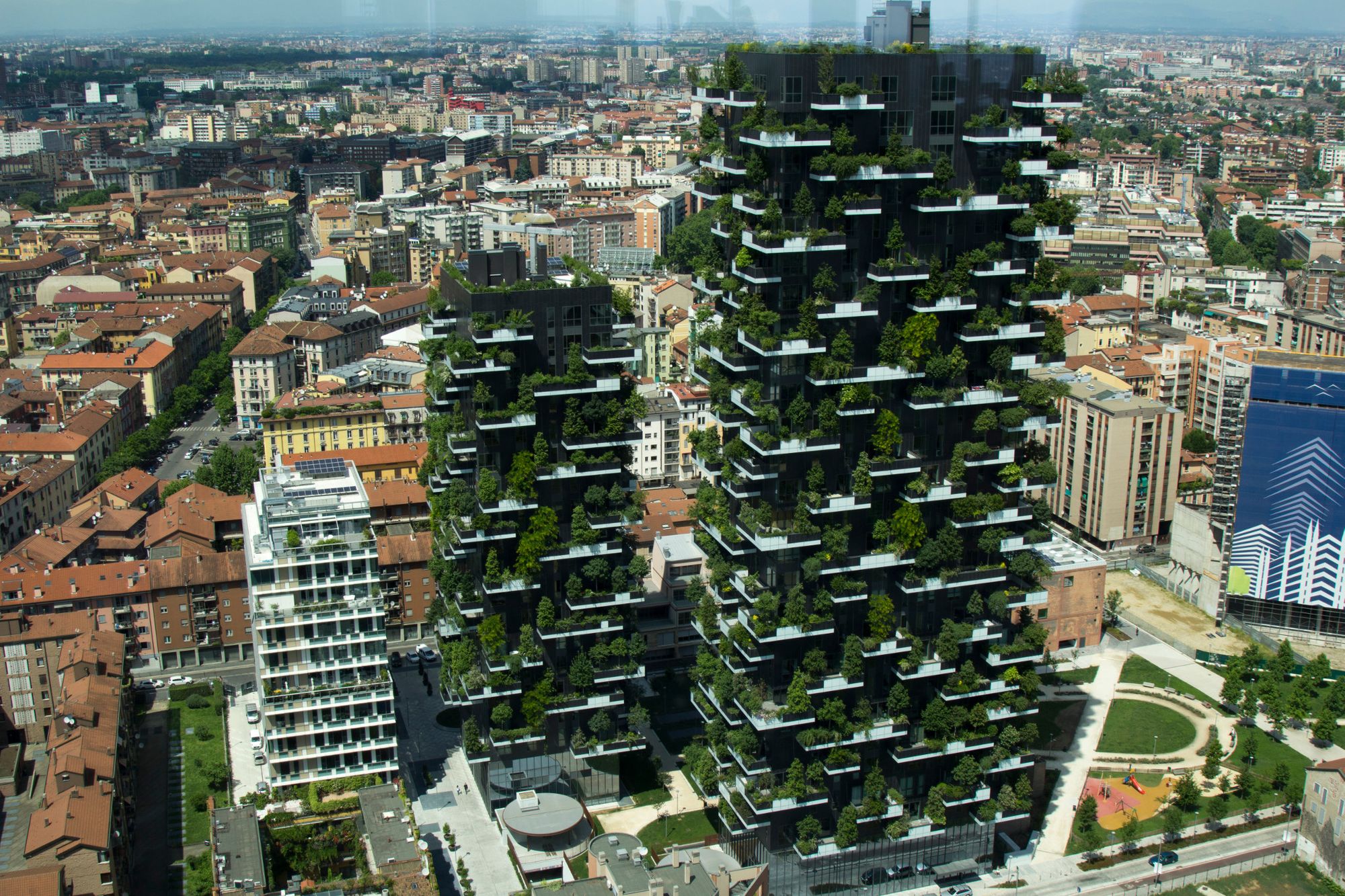Response Paper: Why if there are so many examples of "eco-cities" do we still question their feasibility?

Cover Photo: Bosco Verticale in Milan (Source: Wikipedia)
I am currently studying to get a Master's degree and I am taking a course on sustainability at the moment. Every week the professor assigns us readings to do and gives us a question to write a personal response about after the readings. I will be posting these after they are handed back to us to make sure everybody in the class has handed them in. This week, we read:
- Getting to One-Planet Living in Is Sustainability Still Possible?
- Neihborhood Sustainability Strategies: A review of neighborhood-relevant approaches to sustainability in North America (discussion draft, not available online)
- The EcoDistrict™ Framework: Building Blocks of Sustainable Cities
- Reinvent Phoenix EcoDistrict (Draft TOD, not available online)
- Eco2 Cities - Ecological Cities as Economic Cities by H. Suzuki et al. (World Bank, free)
- Living Cities: Transforming APEC Cities into Models of Sustainability by 2030 by K. Gray, D. Farr, et al. (also does not seem to be online anywhere).
The fundamental issue with eco-cities is that they are tremendously expensive, and when they are not expensive, living in an eco-city requires significant reductions in the standard western quality of life metrics. Just looking at Table 4-1 in Getting to One-Planet Living shows people will have to live in much smaller living spaces with more people per household while eating significantly less (both pure daily calories and meat). Furthermore, designing low ecological footprint societies requires learning new methods of design that throw away the design rules that engineers and planners have learned for decades.
Living Cities: Transforming Apec Cities into Models of Sustainability by 2030 gives many examples of cities and communities fighting to reduce their ecological impacts, but they tend to be very carbon-emissions focused. The cities with available data for ecological footprint are still far above one-world living (like BedZED at 1.8 Earths). However, looking at the policies of larger cities like Freiberg start to show what large-scale affordable sustainable living can look like.
Freiberg focused specifically on attracting young families while creating communities with minimal personal vehicle use. The tremendously high car tax supports the public transit infrastructure and buildings have to meet amazing standards for energy performance that is written into the building code. They also have an extensive car-share enterprise that makes it easy for people to travel at a moment's notice, which is the primary argument for personal vehicle ownership in many places.
Another key element is that other cities can replicate many of these policies and advancements. The EcoDistricts Framework considers this one of the most important developments in environmental policy. Existing communities are responsible for current environmental degradation and planning new areas like Treasure Island can only minimize the increases in ecological footprint. At the same time, solutions are very dependent on location which means we need a lot of creativity on the part of planners and engineers to model city ecosystems. For example, setting up bike lanes could be far more effective in a city like Philadelphia that is relatively flat than in San Fransisco which has a lot of hills.
Getting to One-Planet Living looks at these differences in detail. The chapter looks closely at Vancouver's ecological footprint and how the city is working hard to try to reduce it. Some very expensive policies have a relatively small impact on their footprint. Since municipal solid waste only accounts for one percent of their footprint, spending money to reduce it would have almost no effect on the surrounding environment. The real problem though is that the most significant effects would come from cutting large amounts of meat from their diet and taking more vacations at home.
Looking at high-consumption countries vs the fair Earth-share does make the situation seem hopeless. Daily Calorie supply by itself is an issue, as most people who exercise regularly in addition to walking or biking to work would need more than 2,400 kcal. This is at the crux of the feasibility issue, because even in the ridiculously expensive communities like BedZED or in Scandinavian countries lauded for environmental responsibility, people are not living sustainably.
Personally, I believe that sustainable living is going to require collaboration similar to the open source software movement. Last year I went on a tour of the Princeton Cogeneration Plant since the plant manager's son attended my undergraduate college. Through a variety of techniques, the plant is able to achieve around eighty percent efficiency from burning natural gas in two fighter jet engines. The manager Ted Borer believed this was incredibly important as they could level out the energy production from the new solar field that Princeton had built. More to the point though, they had collected extensive documentation for every system in the plant and are willing to share any of the details about their power and heat production that led to the incredible efficiencies. However, Ted Borer said that very few other agencies had ever reached out to them as industry professionals had very established ways of designing systems and the Princeton Co-Gen plant upends many of those established methods.
Overall, achieving reasonable ecological footprints is going to require combining BedZED's focus on local reclaimed materials and insulation with Dockside Green's focus on gray water use, with Lloyd Crossin's 20 minute city design, with Curitiba's BRT designs. EcoDistricts is trying to collect these policies together, but there needs to be a central database that is open to the public without a pay-wall. The cost issues are still very real since humans have difficulty incorporating future costs from unsustainable living. There will be industry groups that will always question the feasibility of Eco-Cities, but the barrier to entry needs to be as low as possible and the benefits need to be clearly documented if there is any hope for communities all over the world to adapt.